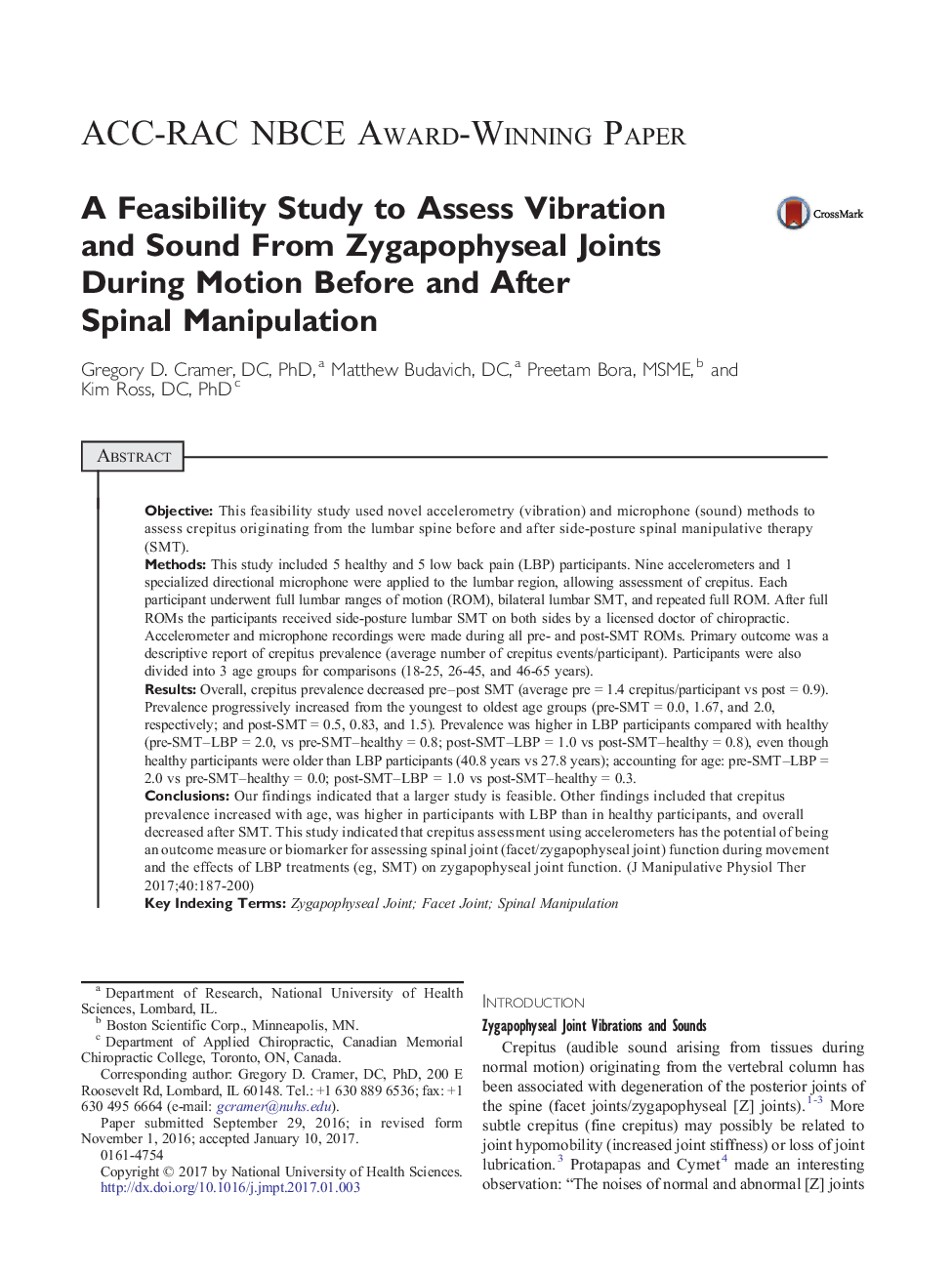| Article ID | Journal | Published Year | Pages | File Type |
|---|---|---|---|---|
| 5564193 | Journal of Manipulative and Physiological Therapeutics | 2017 | 14 Pages |
ObjectiveThis feasibility study used novel accelerometry (vibration) and microphone (sound) methods to assess crepitus originating from the lumbar spine before and after side-posture spinal manipulative therapy (SMT).MethodsThis study included 5 healthy and 5 low back pain (LBP) participants. Nine accelerometers and 1 specialized directional microphone were applied to the lumbar region, allowing assessment of crepitus. Each participant underwent full lumbar ranges of motion (ROM), bilateral lumbar SMT, and repeated full ROM. After full ROMs the participants received side-posture lumbar SMT on both sides by a licensed doctor of chiropractic. Accelerometer and microphone recordings were made during all pre- and post-SMT ROMs. Primary outcome was a descriptive report of crepitus prevalence (average number of crepitus events/participant). Participants were also divided into 3 age groups for comparisons (18-25, 26-45, and 46-65 years).ResultsOverall, crepitus prevalence decreased pre-post SMT (average pre = 1.4 crepitus/participant vs post = 0.9). Prevalence progressively increased from the youngest to oldest age groups (pre-SMT = 0.0, 1.67, and 2.0, respectively; and post-SMT = 0.5, 0.83, and 1.5). Prevalence was higher in LBP participants compared with healthy (pre-SMT-LBP = 2.0, vs pre-SMT-healthy = 0.8; post-SMT-LBP = 1.0 vs post-SMT-healthy = 0.8), even though healthy participants were older than LBP participants (40.8 years vs 27.8 years); accounting for age: pre-SMT-LBP = 2.0 vs pre-SMT-healthy = 0.0; post-SMT-LBP = 1.0 vs post-SMT-healthy = 0.3.ConclusionsOur findings indicated that a larger study is feasible. Other findings included that crepitus prevalence increased with age, was higher in participants with LBP than in healthy participants, and overall decreased after SMT. This study indicated that crepitus assessment using accelerometers has the potential of being an outcome measure or biomarker for assessing spinal joint (facet/zygapophyseal joint) function during movement and the effects of LBP treatments (eg, SMT) on zygapophyseal joint function.
